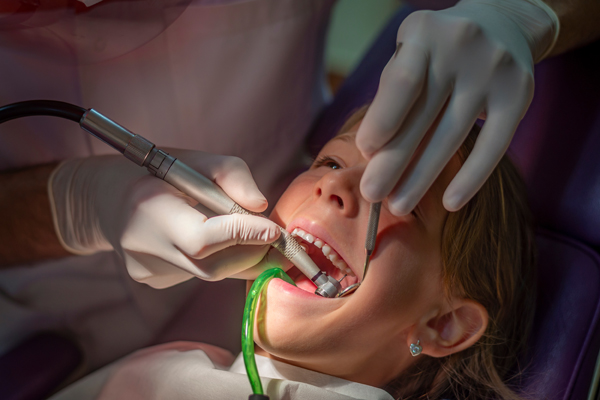Baby Root Canals: A Parent’s Guide to Pediatric Dental Care

Baby root canals may be necessary for your child. Your child’s baby teeth may have been damaged by an injury or decay. Keeping the affected baby tooth is important for the emergence of permanent teeth. Here is a useful guide to proper pediatric dental care when your child needs baby root canals.
Early diagnosis and treatment
Detecting and treating root canal infections early in kids is crucial for their dental health and general well-being. Baby root canals aim to remove infections and relieve pain. Early treatment prevents the infection from spreading to the neighboring baby teeth. It can also keep the developing permanent teeth and jawbone infection-free. Removing the infected or damaged pulp in time can prevent systemic infections as well. It can also prevent dental extractions and other intrusive treatments.
Signs and symptoms a child needs baby root canals
Regular dental checkups can help the dentist identify teeth that need treatment. Some children do not show symptoms. Others have terrible tooth pain. Below are some signs and symptoms a child needs baby root canals right away:
- Inflammation, redness, or a small bump on the gum tissue around the affected tooth
- Tooth pain when biting or chewing
- Foul breath despite regular dental care
- Temperature sensitivity
- Dental discoloration
The procedure
Knowing that a child will need baby root canals may be scary for parents. However, understanding the process can remove these negative thoughts. The dentist can explain each step. The following are the different stages of baby root canals:
- The dentist will perform an initial dental exam. This will involve dental X-rays and oral scans. Forming the diagnosis and treatment plan will follow. Discussing the need for baby root canals will come next.
- Talking about sedation dentistry can provide the right pain-free experience.
- The dentist will make a small opening in the tooth using small dental instruments.
- Removing the infected pulp will follow. Cleaning and disinfecting the canals will remove the remaining bacteria.
- The dentist will fill the pulp chamber with gutta-percha. This will seal the tooth to prevent its reinfection.
- Placing a dental crown over the treated tooth will conclude the root canal therapy. The caps will stabilize, strengthen, and protect the tooth.
Aftercare and healing after baby root canals
Baby root canals will take one dental visit. The dental sedation will make the child sleepy with a numb mouth after the procedure. Eating and drinking must resume only after the numbness fades. Letting the child rest after the appointment is important.
The child will start to feel pain after the anesthesia wears off. Over-the-counter medications can relieve the discomfort. Soft foods will prevent the child from chewing with the treated tooth. This will help the treated area heal and prevent the filling from popping out.
Baby root canals differ from adult root canals
Baby teeth are different from adult teeth. These immature teeth have thinner tooth walls and larger pulp chambers. That is why baby root canals tend to be faster and simpler to do. The dentist for kids will make sure that every aspect of the procedure is child-friendly. Distraction techniques and smaller dental tools allow the child to relax well before and during the baby root canals.
The child will not experience pain during the treatment. Dental sedation can help the child calm down and stay steady while the dentist performs baby root canals. Encouraging the child to rest at home can help start the healing process. The child should not jump or run around.
The need for baby root canals
Falls or any type of trauma can cause a tooth to crack, which allows bacteria to enter the tooth and lodge in the pulp. A child’s teeth are more susceptible to damage and decay than adult teeth because of their thin enamel layer. Dental issues affecting the pulp can occur if dental care is not consistent. Root canal therapy can remove the infection from the pulp cavity. Baby teeth will fall out later, but these teeth must be in top shape until that moment comes. Losing primary teeth too early will deprive the developing adult teeth of guides to their proper positions.
Baby root canals can help your child maintain proper dental health while growing up
Even baby teeth can get infections, especially if your child is prone to falls. Even a tiny dental crack can result in a pulp infection. This condition will need immediate treatment. Baby root canals can correct the situation and provide your child relief. Working with your dentist can help your child recover faster.
Request an appointment here: https://www.hvkidsmiles.com or call Hudson Valley Pediatric Dentistry at (845) 363-4177 for an appointment in our Middletown office.
Check out what others are saying about our services on Yelp: Read our Yelp reviews.
Recent Posts
Dental sealants are plastic coatings that protect teeth surfaces from decay. Since children are highly susceptible to cavities, pediatric dentists often recommend sealants to protect molars and premolars upon eruption. If you are considering this preventive treatment for your child, read on to learn more about the pros and cons of dental sealants.Tooth decay is…
Dental sealants safeguard the teeth against tooth decay by forming a barrier between bacterial plaque and the tooth enamel. The many tiny grooves on the surfaces of the back teeth may catch food particles. Since routine brushing cannot entirely remove them, they often stay there for an extended period. Cavities develop as a result of…
If a cavity develops and worsens, it could lead to the risk of a dental emergency due to an infection or severe discomfort. Dental sealants significantly reduce the risk of a dental emergency by helping to prevent cavities in vulnerable areas of teeth. Read on to learn how dental sealants can prevent a dental emergency…
Pediatric dentistry is a field of dental care that helps foster healthy oral habits in children and adolescents that can last a lifetime. By introducing young patients to regular dental care early on, these dental professionals and the patient's parents can set the foundation for strong, healthy teeth and gums. Here are five ways pediatric…


